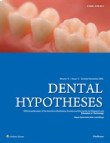Fracture Resistance of Teeth Restored with Newer Methacrylate-Based Dental Composite Materials: An In Vitro Study
Composite have evolved significantly due to the increase in the demand for a more esthetic and conservative approach in dentistry. Modifications have been made on the filler particle size and loading, followed by alterations in the resin matrix substance. Methacrylate-based composite with the addition of nanoparticles to the filler has been introduced in the market, providing improved esthetics and lower polymerization shrinkage. The present study was done to compare the fracture resistance of teeth restored using two newer methacrylate-based composite materials, along with the flexural strength of the composites.
Sixty mandibular premolars were divided into two control groups of 10 teeth each and two experimental groups of 20 teeth. Group I − intact teeth with no preparations (n=10), Group II − prepared but unrestored teeth (n=10), Group III − teeth prepared and restored with a stackable nanohybrid methacrylate-based composite material (IPS Empress DirectTM), and Group IV − teeth prepared and restored with a packable submicron methacrylate-based composite material (Brilliant EverglowTM), respectively. The teeth were embedded in resin-filled PVC rings, and a compressive loading test was carried out for all groups at a cross-head speed of 0.5 mm/min. The flexural strengths of the two composite materials were also analyzed using three-point bending test using Universal Testing Machine. The statistical significance (P < 0.05) of the differences between the experimental groups was analyzed by ANOVA and Tukey post hoc test.
The mean fracture resistance was highest in Group IV (1877.37 ± 494.79) followed by Group III (1763.69 ± 392.51), Group I (1607.08 ± 283.48), and Group II having the least (1442.08 ± 373.66). The mean fracture resistance overall differed significantly between the four groups (P=0.048). Tukey test showed fracture resistance differed significantly between Group II and Group IV (P=0.042) and no significance among other groups.
Fracture resistance was highest in the group restored with the packable submicron hybrid composite material. The packable submicron methacrylate-based composite material also showed higher flexural strength than stackable nanohybrid composite material.
- حق عضویت دریافتی صرف حمایت از نشریات عضو و نگهداری، تکمیل و توسعه مگیران میشود.
- پرداخت حق اشتراک و دانلود مقالات اجازه بازنشر آن در سایر رسانههای چاپی و دیجیتال را به کاربر نمیدهد.


